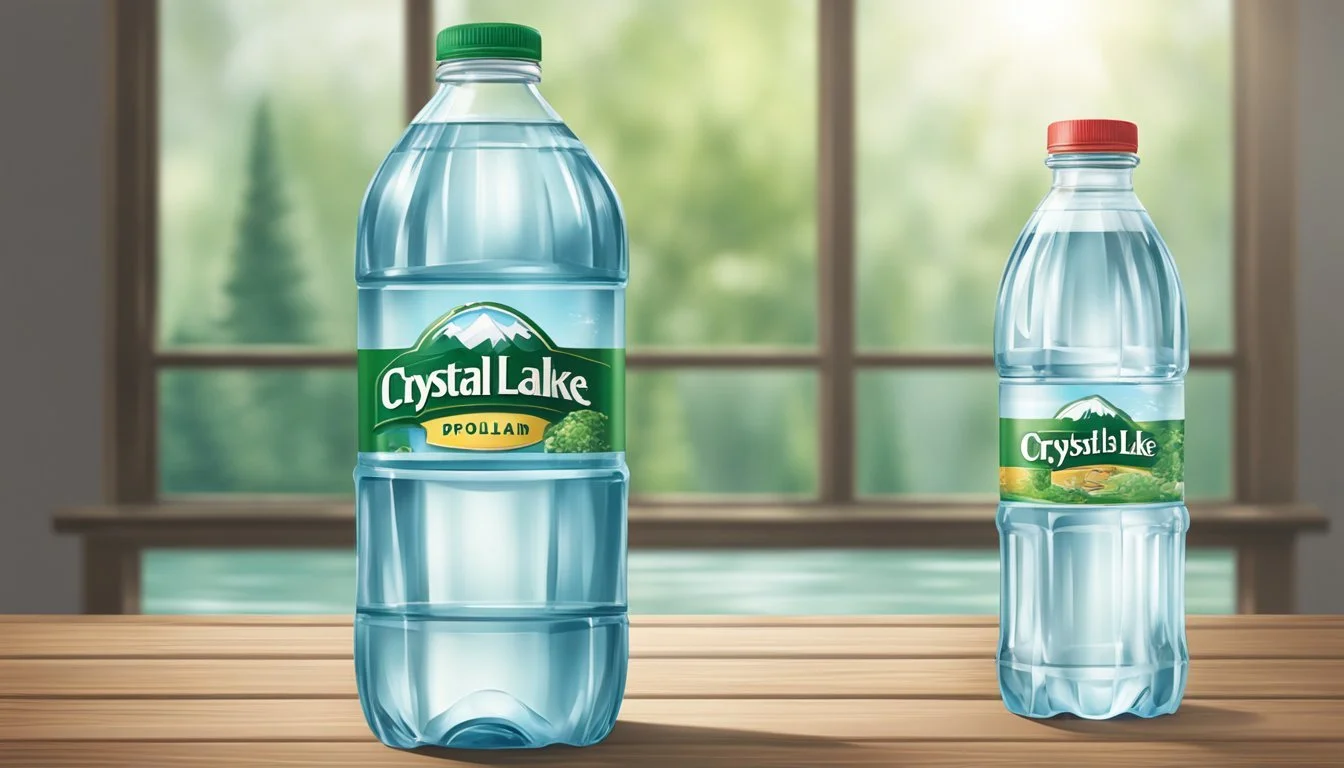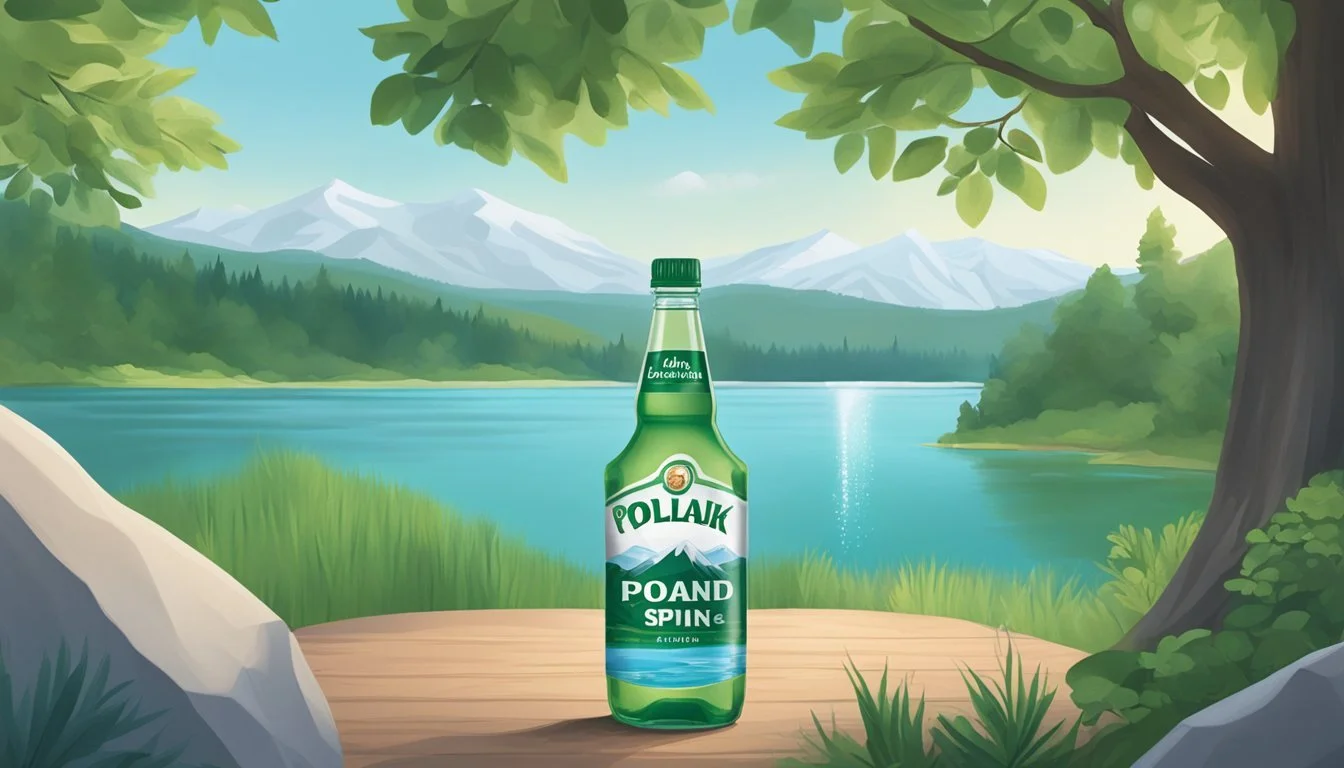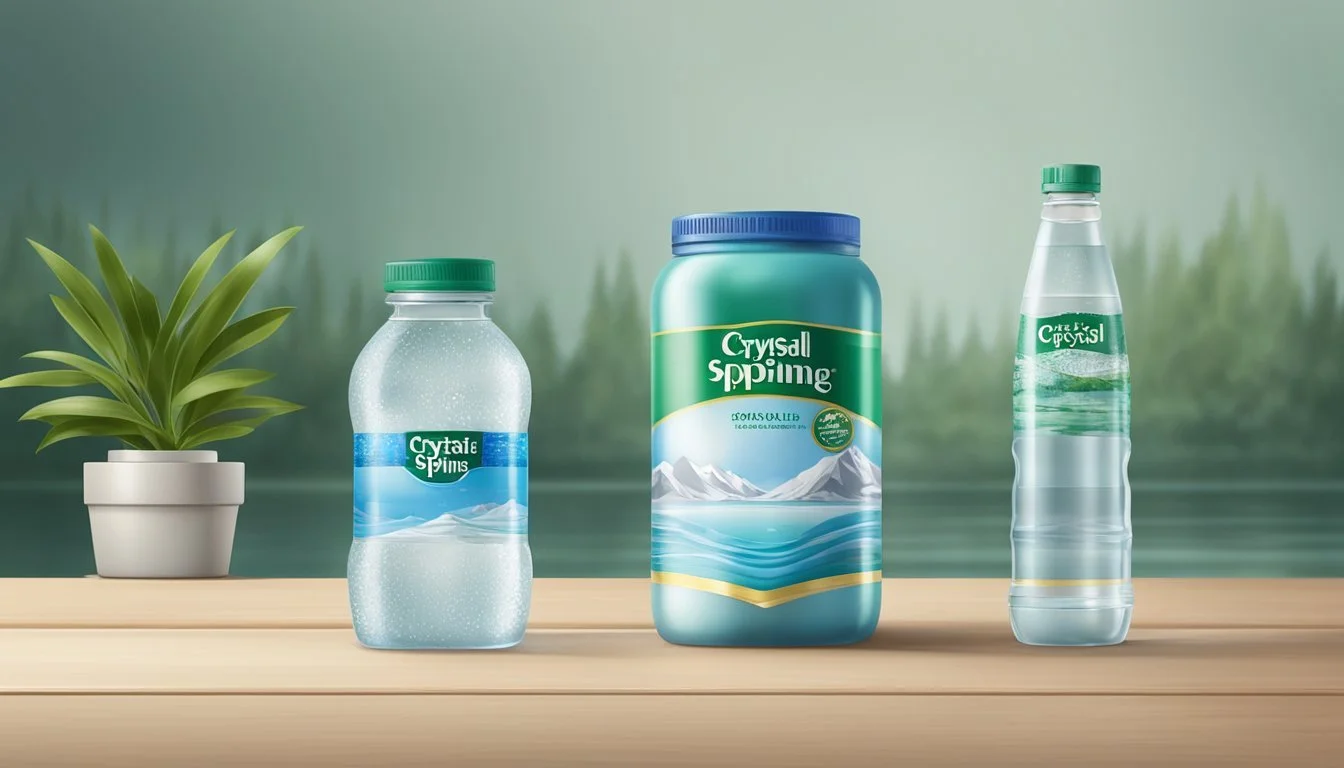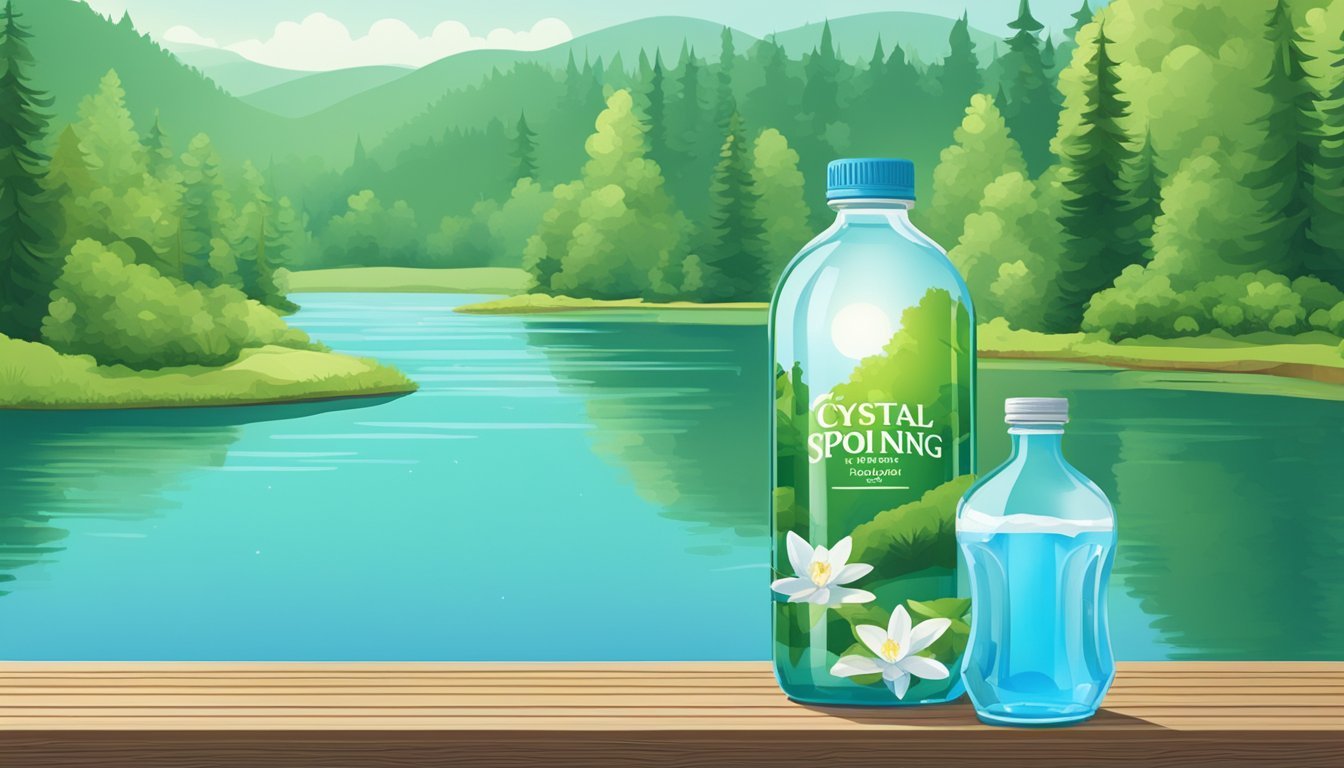Poland Spring vs. Crystal Lake
A Detailed Comparison of Bottled Water Brands
Choosing the right bottled water can be a challenge, given the variety of brands available in the market. Poland Spring and Crystal Lake are two names that often come up in discussions about quality bottled water. While both claim to offer refreshing and healthy spring water, differences in taste, source, and overall quality set them apart.
Poland Spring, sourced from Maine, is one of the most well-known brands and is appreciated for its consistency and reliability. It is often chosen for its clean taste and widespread availability. Crystal Lake, on the other hand, hails from a pristine source and is praised for its crisp and invigorating profile. When comparing these two brands side by side, it's clear that Crystal Lake stands out for its superior taste and natural purity.
Understanding the nuances of bottled water health benefits is crucial for making an informed choice. Poland Spring offers a dependable option for those looking for a widely available and trusted brand. Crystal Lake, with its high-quality spring water, provides a refreshing alternative that could potentially offer a more satisfying taste experience.
The Importance of Water Quality and Safety
Water quality and safety are crucial factors when choosing between different bottled water brands. Contaminants, EPA standards, and potential health implications all play a role in ensuring consumers receive safe drinking water.
EPA Standards for Bottled Water
The Environmental Protection Agency (EPA) sets stringent standards for drinking water quality. These standards aim to protect consumers from harmful contaminants such as lead, arsenic, and mercury. The EPA requires bottled water companies to regularly test their products and comply with established safety thresholds.
Heavy metals and bacteria are among the common contaminants monitored. Brands like Poland Spring and Crystal Lake must adhere to these EPA guidelines to assure the public of their water’s safety. The standards also cover potential sources of pollutants, including the natural environment and the bottling process.
Health Implications of Contaminants
Contaminants in bottled water can pose significant health risks. Lead exposure, even in small amounts, can result in developmental issues in children and cardiovascular problems in adults. Arsenic carries the risk of cancer, skin lesions, and neurological effects. Mercury can damage the nervous system, particularly in unborn babies and young children.
Ensuring water is free from bacteria and pharmaceuticals is equally important. Infections and antibiotic resistance can be traced back to contaminated water. For brands like Poland Spring and Crystal Lake, maintaining a clean supply chain and strict testing protocols is essential to prevent these health risks.
Comparing the Safety of Poland Spring and Crystal Lake
When comparing the safety of Poland Spring and Crystal Lake, consider their water source and purification processes. Poland Spring sources its water from protected springs in Maine, implementing rigorous testing to meet EPA standards.
Crystal Lake, while also adhering to safety standards, has faced scrutiny regarding its accessibility versus quality balance. The brand positions itself as a premium yet affordable option. However, the key is whether it performs equally in regular contaminant checks.
It's critical for consumers to check bottled water labels and associated reports to verify that both brands continuously meet safety regulations, ensuring their water remains free from harmful contaminants like heavy metals and bacteria.
Source Analysis of Poland Spring and Crystal Lake
The origins and types of water sources for Poland Spring and Crystal Lake provide insight into their quality and environmental impact.
Aquifer and Groundwater Analysis
Poland Spring sources its water from multiple natural springs in Maine, including Poland Spring in Poland, ME, and Evergreen Spring in Fryeburg, ME. These sources tap into deep, ancient aquifers that naturally filter the water through layers of sand and gravel, enhancing its purity.
Crystal Lake, on the other hand, often utilizes mixed sources, including public water supplies and purified municipal water. Unlike Poland Spring, which relies heavily on groundwater filtration, Crystal Lake’s use of diverse sources may include less natural filtration processes.
Natural Spring versus Purified Sources
Poland Spring: Known for its 100% natural spring water, Poland Spring captures and bottles water directly from its natural sources. This method ensures the preservation of the water's mineral content and natural taste, characteristics valued by many consumers.
Crystal Lake: By contrast, often purifies water from various origins, including public water supplies. This purification process, while effective in removing contaminants, can strip the water of some of its natural minerals and flavors.
Environmental Impact and Sustainability
The environmental impact of bottled water is a growing concern. Poland Spring emphasizes sustainability by maintaining careful stewardship of its water sources and supporting local ecosystems. The company’s practices include preserving the natural aquifers and minimizing the environmental footprint of water extraction.
Crystal Lake’s sustainability efforts vary. The use of multiple water sources, including public supplies, raises questions about the broader environmental impact. The transportation and purification of municipal water add to the environmental costs associated with the brand.
Both brands face the ongoing challenge of balancing consumer demand with environmental responsibility.
Taste and Mineral Content Comparison
The comparative taste and mineral content of Poland Spring and Crystal Lake bottled waters offer valuable insights for discerning consumers. Assessing flavor profiles, mineral composition, and results from taste tests can highlight the distinctions between these two brands.
Flavor Profiles of Poland Spring and Crystal Lake
Poland Spring water is known for its crisp, clean taste, often described as refreshing and pure. The water is sourced from natural springs in Maine, contributing to its unique flavor.
Crystal Lake water, sourced from springs in the Adirondack Mountains, offers a distinctive, smooth taste with subtle earthy undertones.
Both brands maintain a commitment to preserving the natural taste by avoiding additives.
Mineral Content and Water Hardness
Poland Spring contains a moderate mineral composition, including calcium, magnesium, and sodium. These minerals contribute to the water's slight natural hardness and its refreshing taste.
Crystal Lake water offers a balanced mineral content, with notable quantities of bicarbonate, calcium, and magnesium. The combination of these minerals results in a softer water profile compared to Poland Spring.
The differences in mineral content between these two waters can affect individual preferences for taste and perceived hydration quality.
Taste Test Surveys and Results
Various taste test surveys compare Poland Spring and Crystal Lake based on consumer feedback. Participants often note Poland Spring's fresh and crisp characteristics, marking it as a favored choice for daily hydration.
Crystal Lake receives praise for its smooth finish and enriched taste, associated with its mineral content.
Survey results typically reflect a divide based on personal taste preferences, with some consumers preferring the robustness of Poland Spring and others favoring the nuanced profile of Crystal Lake. The consistent quality of both brands makes them popular choices among bottled water consumers.
Branding and Market Position
Both Poland Spring and Crystal Lake hold distinct positions within the bottled water market, largely shaped by consumer perceptions and brand strategies.
Consumer Perceptions and Brand Loyalty
Poland Spring is recognized for its natural spring water sourced from Maine. This geographic association enhances its appeal to consumers who prioritize natural water sources. The brand's long history contributes to strong consumer loyalty.
Crystal Lake, while less historic, attracts eco-conscious consumers with its responsible sourcing from protected springs and use of BPA-free bottles. The choice between glass and plastic packaging further appeals to a diverse audience. These factors cultivate brand loyalty, although it may be less entrenched than that of Poland Spring.
Market Analysis of Bottled Water Brands
The bottled water market features many players, with Poland Spring and Crystal Lake occupying notable positions. Poland Spring is a well-established brand under Nestlé's umbrella, often commanding significant shelf space and market share.
Crystal Lake, meanwhile, targets premium market segments. Its focus on sustainable packaging and perceived higher quality can justify a higher price point. Both brands must navigate competition from international and domestic bottled water companies, maintaining their market positions through innovation and effective marketing.
Health Benefits and Hydration Efficiency
This section focuses on the health benefits and hydration efficiency of Poland Spring and Crystal Lake bottled waters. It examines electrolyte levels and their impact on hydration, and provides a comparative analysis of each water’s health benefits.
Electrolyte Levels and Hydration
When it comes to hydration, electrolytes play a crucial role. Poland Spring water is sourced from natural springs and is known for its balanced mineral content. This includes trace amounts of minerals like calcium, magnesium, and potassium that are essential for maintaining electrolyte balance in the body.
Crystal Lake water is also sourced from springs but may contain varying levels of minerals. While not always as high in electrolytes as some premium bottled waters, it still offers basic hydration benefits.
Electrolytes such as:
Calcium
Magnesium
Potassium
These contribute to effective hydration by facilitating the absorption of water in the body. Both Poland Spring and Crystal Lake provide these in moderate amounts, making them suitable choices for daily hydration needs.
Comparative Analysis of Health Benefits
Poland Spring offers the advantage of being a natural spring water with a consistent mineral profile. Its purity and mineral content help support overall health, particularly for those looking to maintain electrolyte balance without the use of sports drinks.
Crystal Lake, similarly, provides clean and refreshing water. Its slightly variable mineral content can offer personalized health benefits depending on its specific source.
Health benefits:
Balanced electrolytes for hydration
Pure and refreshing taste
Naturally sourced
Both brands avoid the chemicals and contaminants often found in tap water, making them safer and healthier choices.
This analysis underlines the key factors to consider: electrolyte content, purity, and overall suitability for individual health needs.
Filtration, Purification, and Treatment Processes
Poland Spring and Crystal Lake employ distinct methods for filtration and purification. Understanding these sets of techniques can aid consumers in making more informed choices about their bottled water preferences.
Poland Spring's Filtration Techniques
Poland Spring relies on a series of filtration stages to produce its bottled water. The process begins with sourcing water from natural springs, which undergoes initial screening to remove larger particles.
The water then passes through activated carbon filters to eliminate organic compounds and chlorine. Following this, it undergoes microfiltration to eradicate bacteria and other microorganisms, ensuring the purity.
To finalize the process, the water is ozonated. This step disinfects the water without leaving any residual taste or odor, making the water safe for consumption.
Stage Purpose Screening Remove large particles Activated Carbon Eliminate organic compounds and chlorine Microfiltration Remove bacteria and microorganisms Ozonation Disinfection and removal of odors
Crystal Lake's Purification Methods
Crystal Lake sources its water from protected springs in the United States. It emphasizes using naturally occurring purification processes intrinsic to spring water.
The water undergoes multiple filtration stages, starting with sediment filters to remove particulate matter. Subsequently, it is subjected to reverse osmosis, a treatment that forces water through a semipermeable membrane to get rid of dissolved salts, chemicals, and bacteria.
To ensure zero microbial contamination, the water is treated with ultraviolet light disinfection. This final step effectively inactivates any remaining pathogens, making the water safe without altering its natural mineral content.
Effectiveness of Disinfection Methods
Both brands utilize robust disinfection methods to ensure the water is safe to drink. Poland Spring primarily relies on ozonation, which creates ozone gas to oxidize and inactivate pathogens. Moreover, this method avoids chemical residues.
Crystal Lake opts for ultraviolet (UV) light disinfection, which exposes water to UV radiation, damaging the DNA of bacteria and viruses. This process ensures microbial safety while maintaining the water's natural taste profile.
Both methods are highly efficient, yet they differ in their approaches—ozonation adds a layer of oxidative disinfection, while UV treatment offers a chemical-free option.
Understanding these processes highlights the commitment of both brands to providing clean and safe drinking water.
Legal and Ethical Considerations
Poland Spring and Crystal Lake must navigate both legal obligations and ethical responsibilities, especially concerning labeling, environmental impact, and consumer safety.
Compliance with International Standards
Both Poland Spring and Crystal Lake need to adhere to international water safety and quality standards. Authorities like the World Health Organization (WHO) and the Food and Drug Administration (FDA) set stringent guidelines for bottled water.
Poland Spring has faced scrutiny for its claims of sourcing from natural springs, a standard mandated by international norms. Failure to comply with these standards has legal ramifications, including fines and potential bans from sale in certain regions.
Crystal Lake has maintained a better record in meeting international standards, ensuring transparency in its sourcing and testing processes. They regularly publish their water quality reports, which are critical for building and maintaining consumer trust.
Controversies and Corporate Responsibility
Poland Spring has been embroiled in several lawsuits alleging mislabeling and environmental negligence. For instance, claims that its water contains harmful microplastics have raised substantial ethical concerns. These controversies challenge the company's corporate responsibility and transparency.
In contrast, Crystal Lake has so far avoided major legal conflicts. Their proactive stance on environmental sustainability, including reduced plastic use and recycled packaging, underscores their commitment to corporate responsibility.
Both companies must continue to balance profit and ethical behavior, aligning their practices with consumer expectations and regulatory demands. Ethical lapses not only impact legal standing but can severely harm brand reputation.
Consumer Education and Transparency
Both Poland Spring and Crystal Lake place a high value on consumer education and transparency regarding their bottled water products. Understanding the accuracy of labels and the availability of quality reports are crucial for informed customer choices.
Label Accuracy and Quality Reports
Label accuracy is fundamental for consumer trust. Poland Spring and Crystal Lake are expected to provide detailed labeling that includes the source of the water, mineral content, and any treatment processes.
Both companies conduct frequent quality testing. Poland Spring often publishes the outcomes of these tests in publicly accessible PDF reports. Crystal Lake also follows rigorous testing but may have different methods for sharing results.
Consumers should look for the FDA and EPA compliance symbols, ensuring the product meets safety standards. Regular third-party audits help maintain transparency and trust.
Educating Customers on Water Choices
Educating customers involves providing clear, accessible information about the water's source, treatment methods, and environmental impact. Poland Spring uses its website and customer service contacts to offer this information, sometimes including educational videos.
Crystal Lake emphasizes sustainability, often highlighting their ethical sourcing and recycling efforts. Both brands should include detailed FAQs and education materials in digital formats for easy access.
Consumers are encouraged to read these materials, understand the differences in water types, and make knowledgeable decisions based on their needs and preferences.
More About Poland Spring
Acqua Panna vs Poland Spring: Which Bottled Water is Better?
Boxed Water vs Poland Spring: Which Bottled Water is Better?
Core Hydration vs Poland Spring: Which Bottled Water is Better?
Ice Mountain vs Poland Spring: Which Bottled Water is Better?
Icelandic Glacial vs Poland Spring: Which Bottled Water is Better?
Mountain Valley Spring Water vs Poland Spring: Which Bottled Water is Better?
Nestle Pure Life vs Poland Spring: Which Bottled Water is Better?
Poland Spring vs Aqua Carpatica: Which Bottled Water is Better?
Poland Spring vs Cascade Mountain: Which Bottled Water is Better?
Poland Spring vs Castle Rock: Which Bottled Water is Better?
Poland Spring vs Crystal Geyser: Which Bottled Water is Better?
Poland Spring vs Essence pH10: Which Bottled Water is Better?
Poland Spring vs Hawaii Volcanic: Which Bottled Water is Better?
Poland Spring vs Hawaiian Springs: Which Bottled Water is Better?
Poland Spring vs Kirkland Signature: Which Bottled Water is Better?
Poland Spring vs Liquid Death: Which Bottled Water is Better?
Poland Spring vs Proud Source: Which Bottled Water is Better?
Poland Spring vs Purely Sedona: Which Bottled Water is Better?
Poland Spring vs Richard's Rainwater: Which Bottled Water is Better?
Poland Spring vs San Pellegrino: Which Bottled Water is Better?
Poland Spring vs Simple Truth: Which Bottled Water is Better?
Poland Spring vs Solan de Cabras: Which Bottled Water is Better?
Poland Spring vs Talking Rain AQA: Which Bottled Water is Better?
Poland Spring vs Weird Water: Which Bottled Water is Better?
Poland Spring vs Whole Foods 365: Which Bottled Water is Better?
Poland Spring vs Whole Foods Italian Still Mineral water: Which Bottled Water is Better?
Poland Spring vs Zephyrhills: Which Bottled Water is Better?
More About Crystal Lake
Aqua Carpatica vs Crystal Lake: Which Bottled Water is Better?
Cascade Mountain vs Crystal Lake: Which Bottled Water is Better?
Core Hydration vs Crystal Lake: Which Bottled Water is Better?
Crystal Geyser vs Crystal Lake: Which Bottled Water is Better?
Crystal Lake vs Essence pH10: Which Bottled Water is Better?
Crystal Lake vs Proud Source: Which Bottled Water is Better?
Hawaii Volcanic vs Crystal Lake: Which Bottled Water is Better?
Hawaiian Springs vs Crystal Lake: Which Bottled Water is Better?
Ice Mountain vs Crystal Lake: Which Bottled Water is Better?
Icelandic Glacial vs Crystal Lake: Which Bottled Water is Better?
Kirkland Signature vs Crystal Lake: Which Bottled Water is Better?
Liquid Death vs Crystal Lake: Which Bottled Water is Better?
Mountain Valley Spring Water vs Crystal Lake: Which Bottled Water is Better?
Nestle Pure Life vs Crystal Lake: Which Bottled Water is Better?
Purely Sedona vs Crystal Lake: Which Bottled Water is Better?
Richard's Rainwater vs Crystal Lake: Which Bottled Water is Better?
San Pellegrino vs Crystal Lake: Which Bottled Water is Better?
Simple Truth vs Crystal Lake: Which Bottled Water is Better?
Solan de Cabras vs Crystal Lake: Which Bottled Water is Better?
Talking Rain AQA vs Crystal Lake: Which Bottled Water is Better?
Whole Foods 365 vs Crystal Lake: Which Bottled Water is Better?
Whole Foods Italian Still Mineral water vs Crystal Lake: Which Bottled Water is Better?








